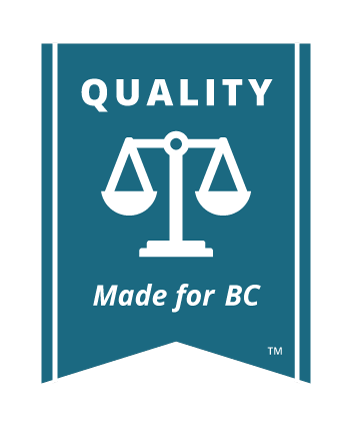Orders Basics
At the end of a hearing or a trial, a judge will make their order. This is where the judge says what is to be done. For example, the judge may order the defendant to pay money. Or the judge may order that the case be dismissed.
The judge’s order takes effect as soon as it is said. However, the order also needs to be “entered”. It is the job of the parties to agree to the order and submit it for filing at the registry. This means that it is extremely important that you listen carefully, and write down what a judge says at the end of a hearing.

Key Terms
“Entered” means that a document has to be filed with the Court stating what was ordered

Read the Rules
Rule 13-1 Orders
Types of Orders
Before you start a lawsuit, you should have a clear idea of what, exactly, you will be asking the court to order. In general, you will be asking the court to order someone to do (or stop doing) something. You should have the terms of your draft order in mind right from the start.
The most common types of orders are:
- Orders made after an application to the court, before trial (a chambers application)
- Orders made after a trial
- Consent orders, where the parties agree on the terms of the order without actually having to appear before a judge or associate judge of the court
The order you are seeking should be set out in the “Relief Sought” section of your Notice of Civil Claim, Counterclaim, Petition, or Application.
Orders After Court Applications
You may make an application to the court to ask for an order to resolve issues that come up before the trial of your case. These kinds of applications are generally called “chambers proceedings” and they do not result in a final decision on your case. See Chambers Applications. For example, you might want to make an application in chambers to get an order for the other party to produce certain documents for you to inspect.
The parties, not the judge or associate judge, are responsible for preparing the written order and getting it signed by the judge or associate judge, as well as by the parties who appeared at the hearing.
You can do this in one of three ways:
- You can prepare a draft order (Form 35) before the hearing, setting out the terms of the order that you are asking the court to make.
Before the hearing, take the order to the registry to be “vetted”. This means that the registry staff will have a look at it to make sure it is in the proper form. The registry staff will make a note on the order that it has been vetted.
If you are successful in your application to the court, you can ask the judge or associate judge who heard the application to sign the order. The court clerk will hand up the order to the judge or associate judge and, if it is accurate and has been vetted, the judge or associate judge will sign it at that time. In these situations, you don’t need to get the other parties to sign your draft order.
- If you don’t have a draft order in Form 35, but the court orders what you were asking for in your application, show the judge or associate judge where your application asks for that order.
In some cases, the judge or associate judge may initial your application (Rule 13-1(4)). You can file that initialed document in the court registry and it has the same effect as a formal court order. This saves you the steps of drafting the order and getting signatures from the other parties.
- If the judge or associate judge does not sign the order in chambers, one of the parties must draft the order (Form 35). Any party can draft the order. Usually, the party who won the application will draft the order, but if one party has a lawyer, that lawyer might agree to draft the order. In some cases, the court might rely on Rule 13-1(15) and ask the registry to draft the order.
As a final step, you file the signed order in the court registry.
The process of the registry filing the order may take some time. This is because the registry staff has to check the order you submitted against the notes of the court clerk.

Find the Form
Form 35 Order made after application
Orders After Trial
After trial, one of the parties (usually the party who won) will draft the order for the judge to sign. These orders are drafted using Form 48 and it records what the judge decided in your case.

Find the Form
Form 48 Order after trial
Consent Orders
Parties sometimes agree on an outcome to the dispute without going to court. In some cases you will want an order from the court even though you have agreed on the terms of the order. In such cases, you file a requisition (Form 17) and a draft of the order that you are asking the court to approve. This draft order is in Form 34. More information is set out in Rule 13-1(10).

Find the Form
Form 34 Consent Order
If there is a problem with your order, the registry might ask you to redraft your order or to appear in court and explain your case. If your order is approved, the registry will return it to you, stamped and ready to be enforced.
A consent order is not complete until each party affected by the order indicates their consent. If a party is represented by a lawyer, the lawyer can sign the consent order. If a party is not represented by a lawyer, the litigant can consent in writing, or orally at the court hearing.
Other Orders
You may need to prepare other orders:
- An order for costs and an order to settle a bill of costs are described in Costs
- A default judgment, given when the other party does not respond to your notice of civil claim, is described in Default Judgment.
- You may want to get an order from a court in another jurisdiction (e.g., other parts of Canada or another country) registered in a BC court so you can enforce the order. In such cases, you need to use Form 77. Rule 19-3 and the Court Order Enforcement Act give you information about foreign judgments. Dealing with foreign jurisdictions is complicated and you should seek assistance from a lawyer. You may also need to consult a lawyer in the foreign jurisdiction.







 JusticeEducation.ca
JusticeEducation.ca JusticeEd
JusticeEd /JusticeEducation
/JusticeEducation